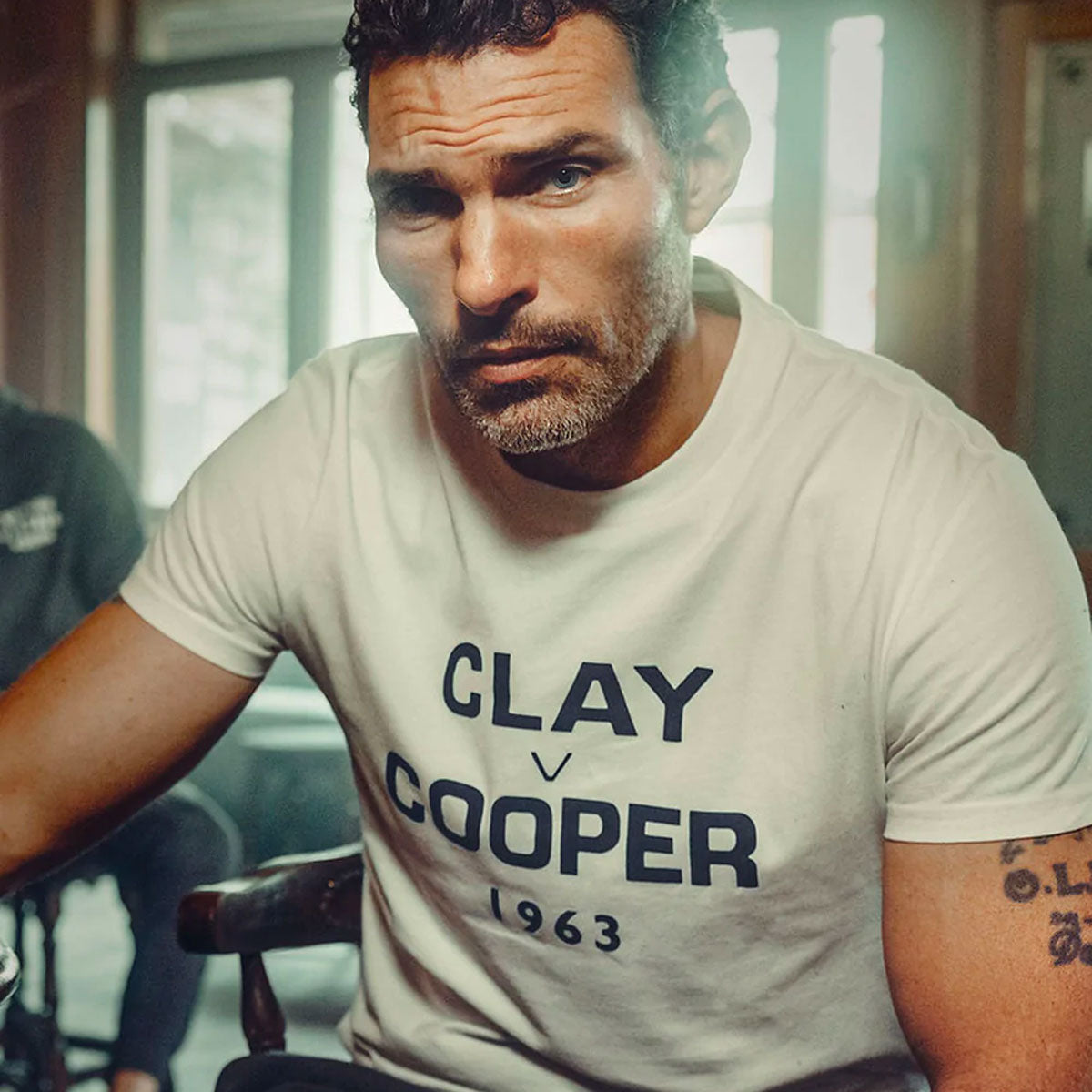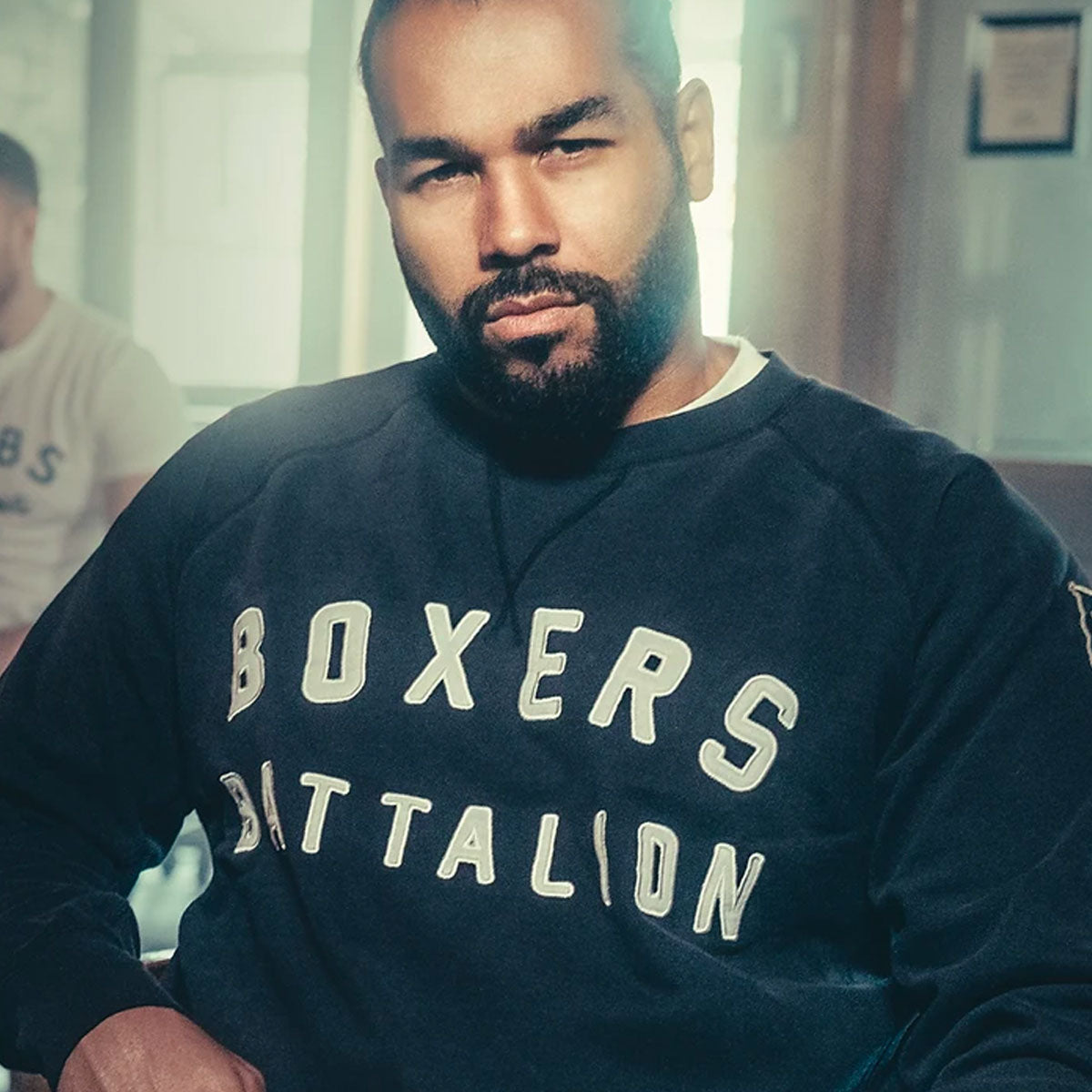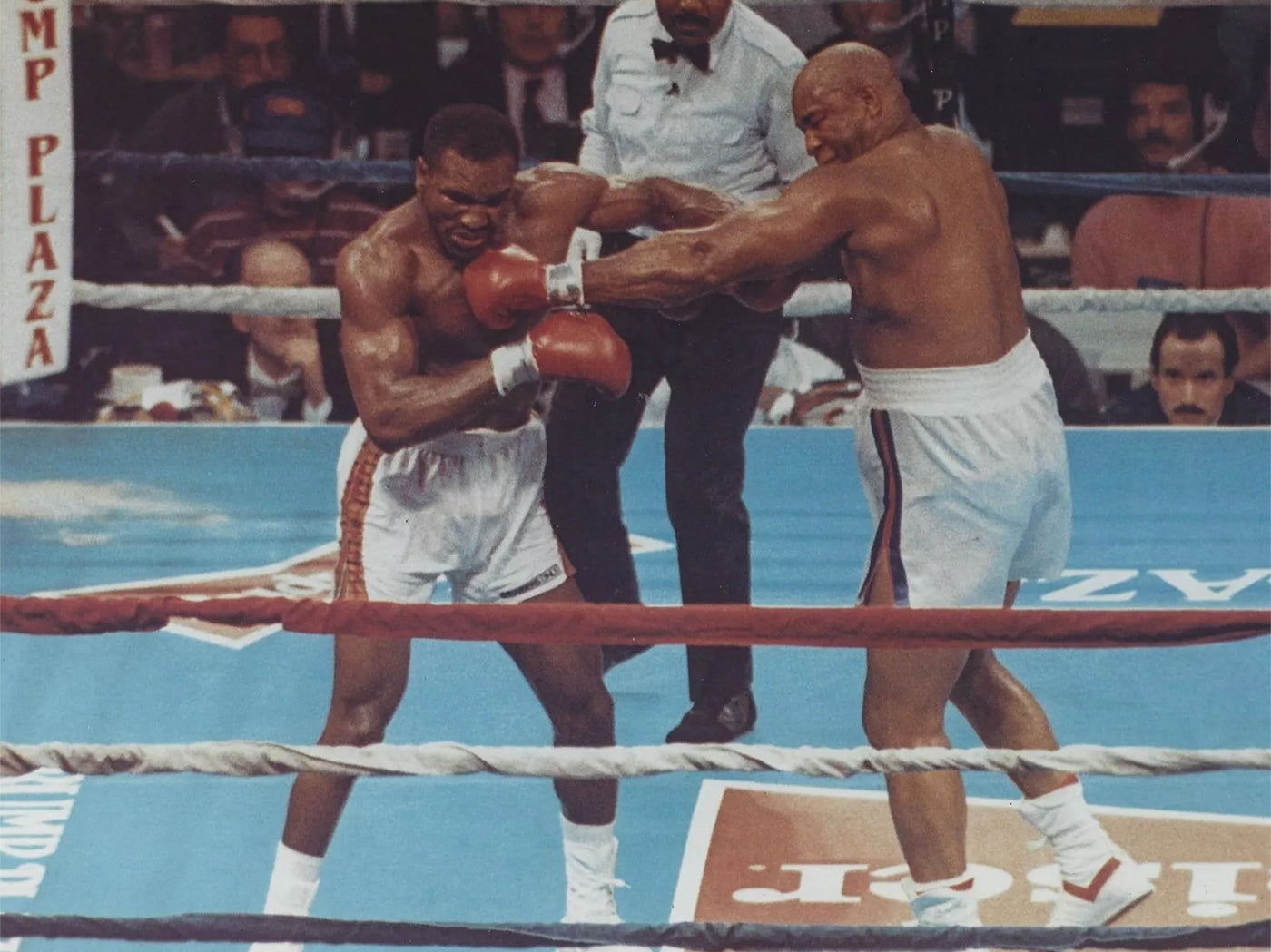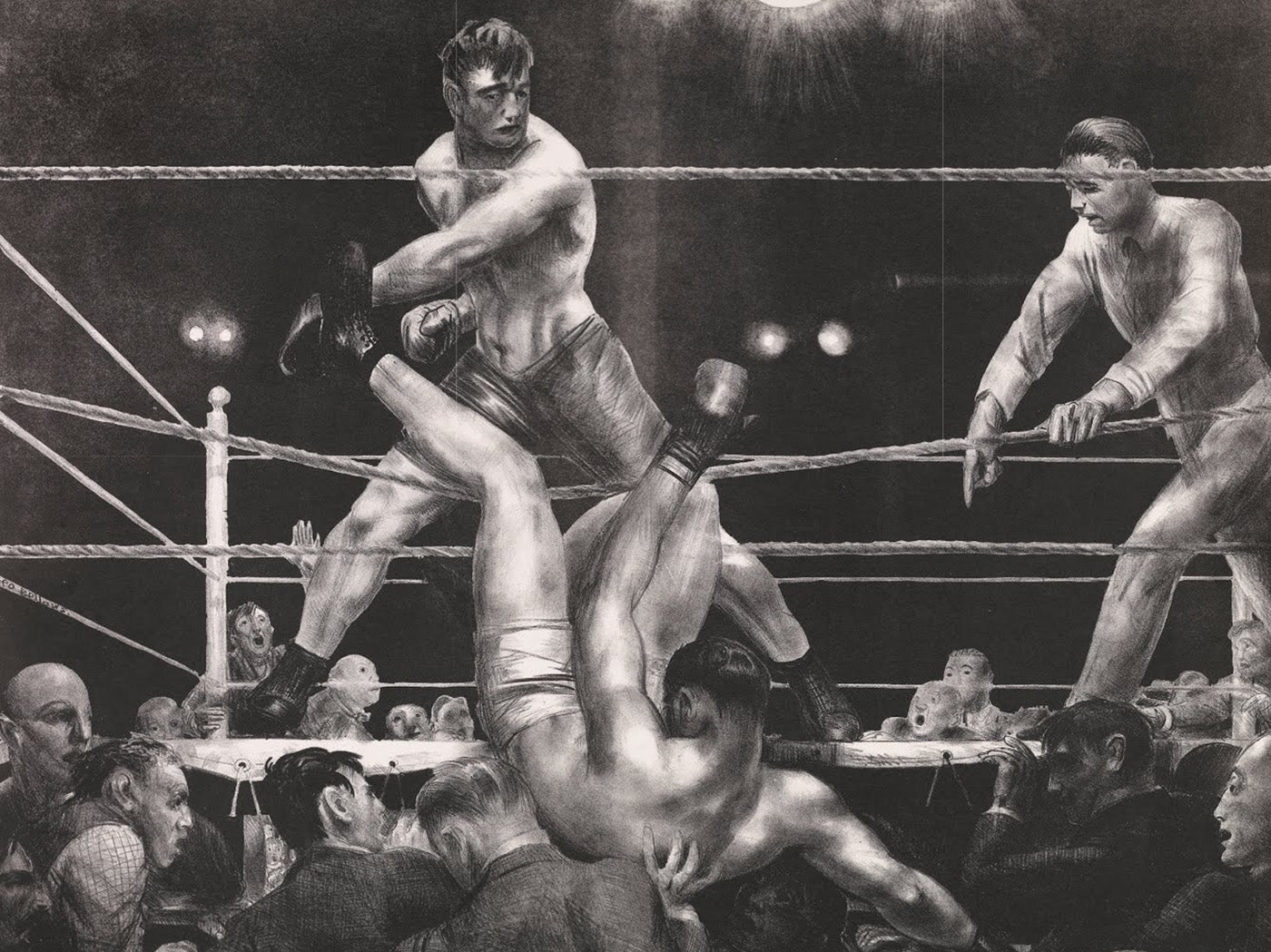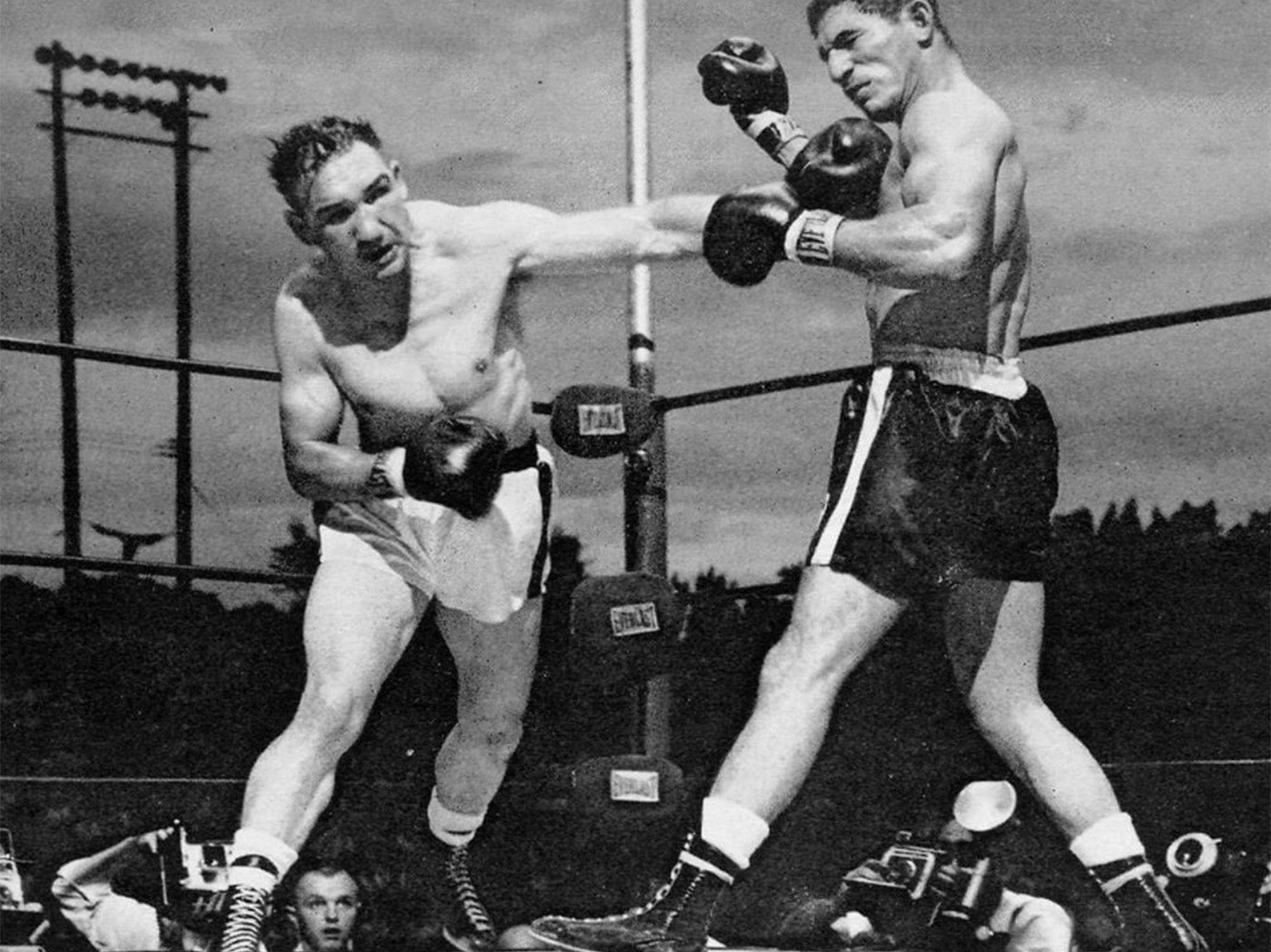“When at a young age you learn to face your fears, that makes the difference between people being champions and people not being champions.”
Evander Holyfield
'BVB writer, Paul Zanon is currently working with prisoners at HMP Thameside using the power of sports writing to help them develop into wordsmiths. We are delighted to support his efforts by donating a prize to the winner of a competition he held with the prisoners. Here is the winning entry, we hope you enjoy it' British Vintage Boxing.

In a sport defined by power, grit and courage, few fighters have earned their place in the pantheon of heavyweight boxing quite like Holyfield. Known for his relentless work ethic, heart-stopping battles and overcoming challenges both inside and outside the ring, Holyfield remains one of the most respected in the sports’ long history.
The Real Deal’s story is as much about hard graft and determination, as it is about skill. Operating in weight classes where power typically dominates, Holyfield brought in a mix of finesse, technical brilliance and determination.

Born on 19 October 1962 in Atmore, Alabama, Holyfield grew up in humble surroundings, in Atlanta, Georgia. Raised by a single mother who instilled hard work and discipline to all nine of her children, Evander, the youngest, was introduced to boxing at the age of seven. However, it wasn’t until his teenage years that he began to develop his signature style – a mix of precision, endurance and mental fortitude. The great man once said, ‘It’s impossible for one parent to take on the role of mother and father, but my momma did the best she could…..One of my goals as a kid was to be better than my brothers and sisters. But my mother didn’t give me no excuses about them being older or better. She just said, ‘You’ve got to work harder.’ So that gave me the backbone of who I am today.”
A Journey Through the Amateur Ranks
Holyfield’s road to boxing superstardom was not a straight shot to the top and he was an undersized fighter even in his early amateur days.
The Georgian resident’s first taste of elite level silverware came at the 1984 Olympics in Los Angeles, capturing bronze in the heavyweight division, albeit, controversy surrounded his medal winning fight. Holyfield lost his semifinal to New Zealand’s Kevin Barry, due to a highly disputed disqualification for a punch thrown after the bell. The decision left a bitter taste in his mouth, but he left a lasting impression, with the boxing world taking note of Holyfield’s skill and poise.
Cruiserweight King: The Making of The Real Deal.’
Turning professional in 1984, Holyfield wasted no time moving up the cruiserweight rankings, creating one of the most dominant reigns in boxing history. By 1986 he won his first world title, defeating Dwight Muhammad Qawi in what can only be described as an absolute war. The 15-round slugfest remains one of the greatest fights in the division’s history, with both men leaving everything in the ring. Holyfield’s victory proved that he could take punishment, fight through adversity and still come out on top.
By 1988, The Real Deal had unified the WBA, IBF and WBC world cruiserweight titles. However, there was a problem, in so much as challenges in the division had now run dry. This was the career defining push he needed to take the leap to the heavyweight echelons and challenge the best of the best.
Of course, the doubters reared their heads and asked, ‘Can Holyfield, a natural cruiserweight, compete with the monsters of the heavyweight division?’ Standing at 6ft 2 ½ inches, he was smaller than most and lacked the raw punching power of perhaps Mike Tyson or Riddick Bowe. None of this mattered to the future Hall of Famer as his self-belief was all he needed to bring his dream to fruition.
Entering the Heavyweight Frey: Defying the Odds
The cruiserweight division only came into the fold in 1979 and as such, fighters and champions within this weight category were often overlooked and looked down on, with certainly less prestige than the division above. Well, Holyfield changed that narrative and his lead to the heavyweight division was nothing short of remarkable.
After an initial string of heavyweight victories, including three wins on the bounce against James ‘Quick’ Tillis, Pinklon Thomas and Michael Dokes, on 25 October 1990, Holyfield found himself in line for a title shot at the undisputed world heavyweight championship. The reigning champion was James ‘Buster’ Douglas, fresh off his historic upset victory over Mike Tyson in Tokyo and all eyes were now on Holyfield for an upset of his own.
Douglas may have beaten the monstrous shape of Mike Tyson, but when he appeared at the Mirage Hotel and Casino in Las Vegas in October 1990, he was simply no competition for the driven powerhouse of Holyfield. Evander smashed the bigger man, knocking him out in the third round and in doing so, being crowned a two-weight undisputed world champion. The doubters were silenced and a new king had officially been announced on the heavyweight scene.
Despite his success, Holyfield’s reign was far from easy. In a heavyweight era loaded with talent, every fight was a test and Holyfield wasn’t the type to shy away from danger. He defended his title against three massive names in George Foreman, Bert Cooper and Larry Holmes before locking horns with Riddick Bowe, in a career defining fight.

Holyfield vs Bowe: The Chronicle of Riddick
Holyfield’s rivalry with Bowe stands out as one of the greatest trilogies in the modern era of heavyweight boxing. Their first fight on 13 November 1992 was an instant classic, in a brutal 12-round battle that saw both men trade heavy shots throughout the entire 36 minutes. In a fight many expected Holyfield to win, Bowe, the younger and much larger man, came out on top, handing the champion his first professional loss in 29 fights.
The Bowe defeat was naturally a setback, but one that fuelled Holyfield’s desire to reclaim his throne. The rematch, seven months later was equally as thrilling, with the added drama of a someone known only as, ‘The Fat Man,’ parachuted into the ring during the seventh session. Despite the bizarre interruption, Holyfield’s concentration was undisturbed and he went on to grind out a well deserved majority decision points victory. The rubber match occurred in 1995, with Bowe winning via a seventh round stoppage, but the trilogy solidified both fighters’ legacies and left an indelible mark in the fistic history books.
Tyson vs Holyfield: A Clash of the Titans

You can’t talk about Evander Holyfield without discussing his epic rivalry with Mike Tyson. The self-proclaimed Baddest Man on the Planet, was the most feared man in boxing during the later 1980’s. The pair were supposed to clash much earlier in their careers, but after Tyson’s shock-loss to Douglas, followed by a period in prison, the fight didn’t come to fruition until 1996.
Holyfield, the older of the two, was considered by many as the underdog going into the fight. The comments from the naysayers not only fuelled Holyfield’s desire to prove them wrong, but it helped him produce a performance that was Ring Magazine’s ‘1996 Upset of the Year,’ as he dominated and finally knocked out Tyson in the eleventh round. With the WBA strap on the line, he also became a three-time world heavyweight champion.
The rematch in 1997 was less remembered for the boxing and more for the infamous moment when Tyson shockingly bit off a large chunk of Holyfield’s ear and spat it out onto the ring canvas, whilst Holyfield jumped up and down in seething pain. Despite the controversy, ‘Ear-vander’ Holyfield emerged as the victor, cementing his status as Tyson’s kryptonite.
In a surprising business venture that tapped into that ear biting episode, Tyson teamed up with Holyfield in 2022 to launch a range of cannabis infused edible gummies, shaped like Holyfield’s bitten ear and playfully named, ‘Mike Bites.’ A year later, Holyfield added to the line with his own, ‘Holy Ears.’ Together they capitalised on one of the sport’s most notorious moments and turned past controversy into profit. It came as a perfect financial crossroads for Holyfield, because in 2012 he was declared bankrupt, having squandered much of the $230 million he had earned during his career on cars, houses and child support. The man who was one of nine children, went on to have 11 himself, with six different women and his own home was costing upwards of $1 million per year to maintain. He said at the time that he was forced to sell everything but his soul.
The End of an Era and a Lasting Legacy
Holyfield, like many boxing greats couldn’t quit while the going was good and unfortunately fought until a few months shy of his fiftieth birthday. In a 56 fight career which boasted 44 victories with 29 knockouts, Holyfield also incurred a number of unnecessary losses in the latter stages. At the time of hanging his gloves up in 2011, his record read, 44 wins, 10 defeats and two draws.
What sets Holyfield apart from many of his contemporaries, is not just his success in two weight divisions, or the titles he held, but the manner in which he fought. Holyfield was the quintessential warrior. A man willing to step into the ring with anyone, anytime and give it his all. He exemplified the spirit of boxing-bravery, resilience and a refusal to quit. In an era when where many champions avoided the toughest challenges, Holyfield consistently sought them out. His wars with Bowe, Tyson and Lennox Lewis will be remembered for generations.
As the years pass, the legend of Evander Holyfield will continue to grow. He wasn’t just a champion in the ring; he was a man who personified what it means to be a fighter in every sense of the word. In a sport built on mythical figures, few loom as large as, ‘The Real Deal.’

‘When you don’t have others looking out for you, everybody’s taking something for themselves….I used to be foolish, but I ain’t foolish no more.’
Evander Holyfield


